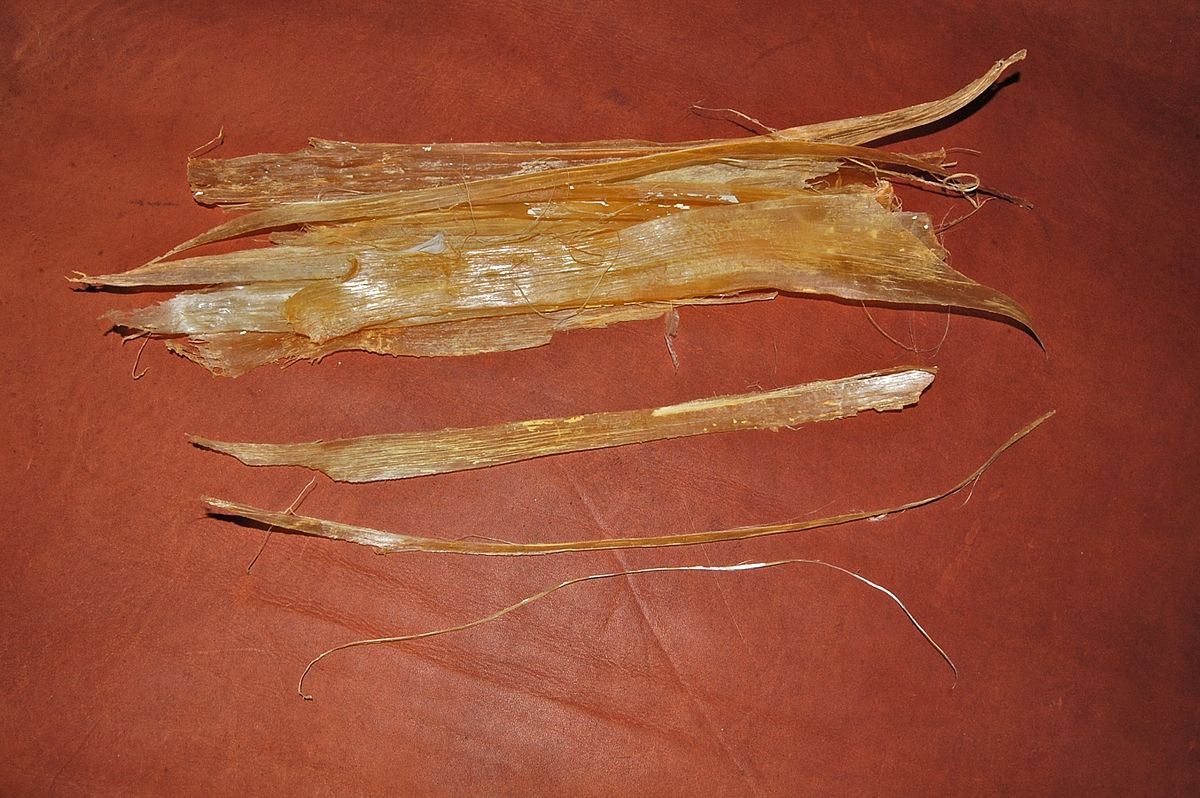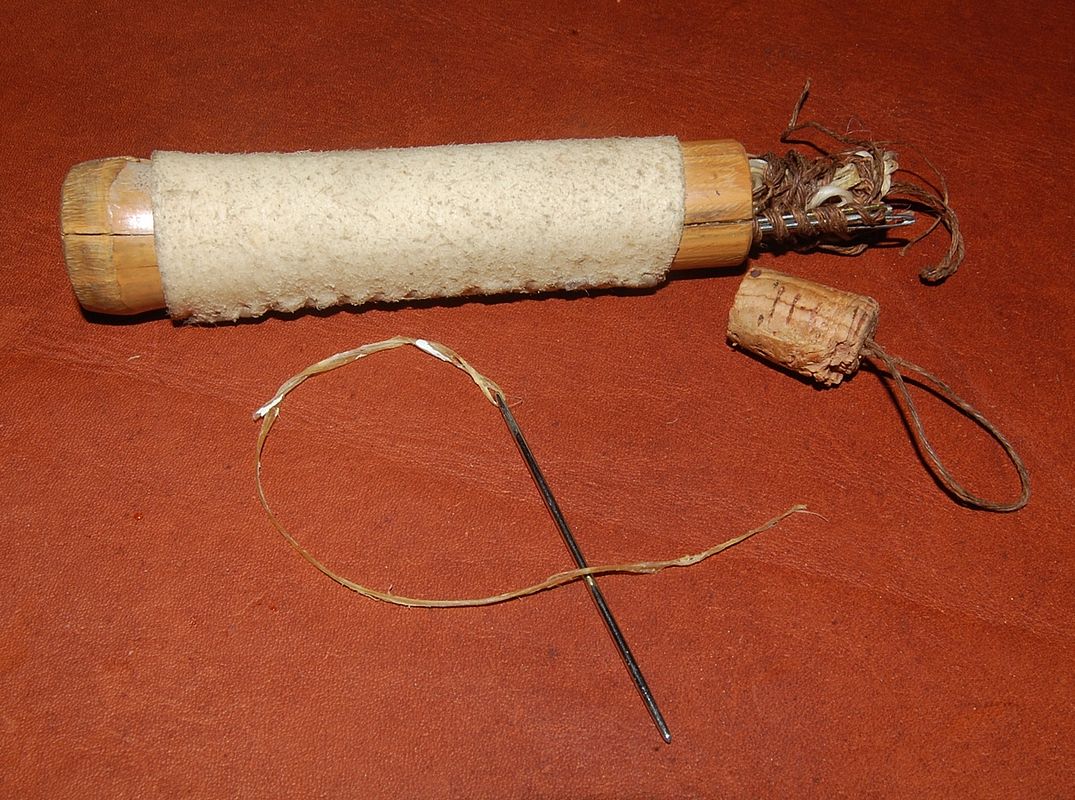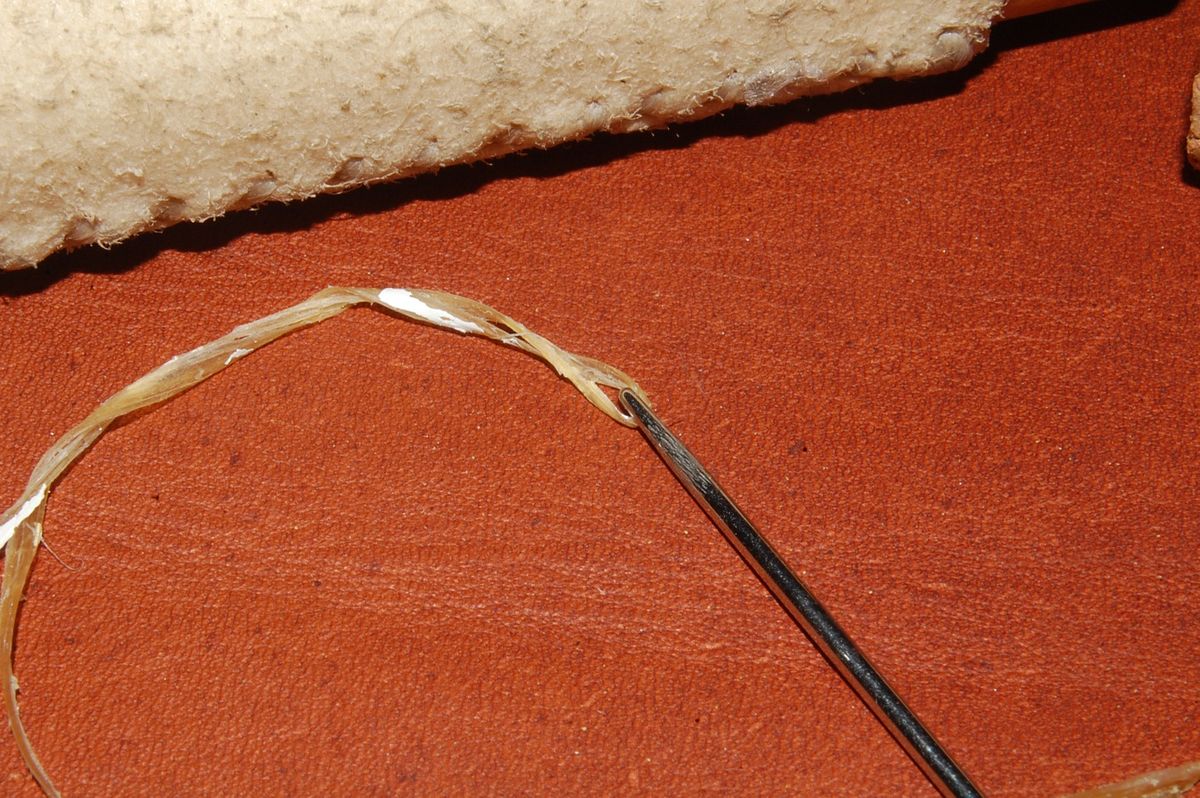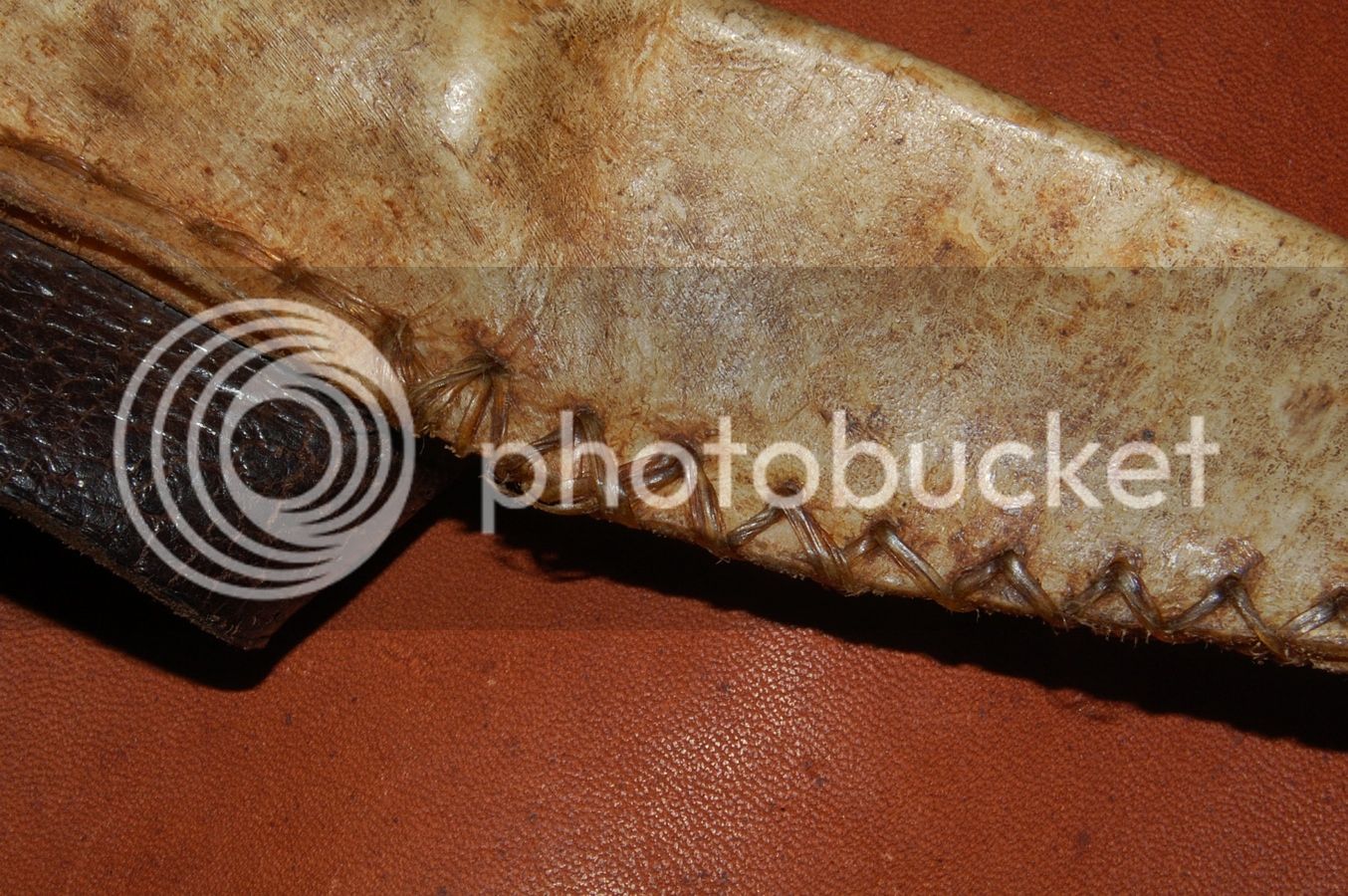I've collected sinew from deer and used it for a few small projects, and it's pretty impressive stuff. It's not difficult to gather if you are a deer hunter. All you have to do is strip what's commonly called the silverskin off the long muscles of the back, scrape and wash it clean of all tissue and then dry it. It gets hard as cardboard and stays that way forever, nothing else needed. You can easily split it with your nails to any size you need, right down to the thinest thread. Then put it into water for 1-2 minutes and it’s as limp as a wet noodle and can be threaded onto a needle and used just like ordinary thread. It’s a bit difficult for me to work with, very slippery when wet, and knots won’t hold well until they are dry. It’s tough stuff and takes a lot of wear.
Some dried pieces, about a foot long, see how it can be split:

I use it just like any other thread, keep a little in my sewing kit on treks:


I’ve used it only for a few small, simple items. This patch knife sheath has been on almost every hunt and trek I’ve done for the last 18 years, still in good shape. I also used it to sew the rawhide sleeve on my little bamboo needle-thread case when it began to split from drying.

I don’t do fancy work, but I’ve enjoyed finding out what it is like to work with sinew. I’ve never seen any reference to people other than Native Americans using it, if you have any, please pass them along.
Spence
Some dried pieces, about a foot long, see how it can be split:

I use it just like any other thread, keep a little in my sewing kit on treks:


I’ve used it only for a few small, simple items. This patch knife sheath has been on almost every hunt and trek I’ve done for the last 18 years, still in good shape. I also used it to sew the rawhide sleeve on my little bamboo needle-thread case when it began to split from drying.

I don’t do fancy work, but I’ve enjoyed finding out what it is like to work with sinew. I’ve never seen any reference to people other than Native Americans using it, if you have any, please pass them along.
Spence





